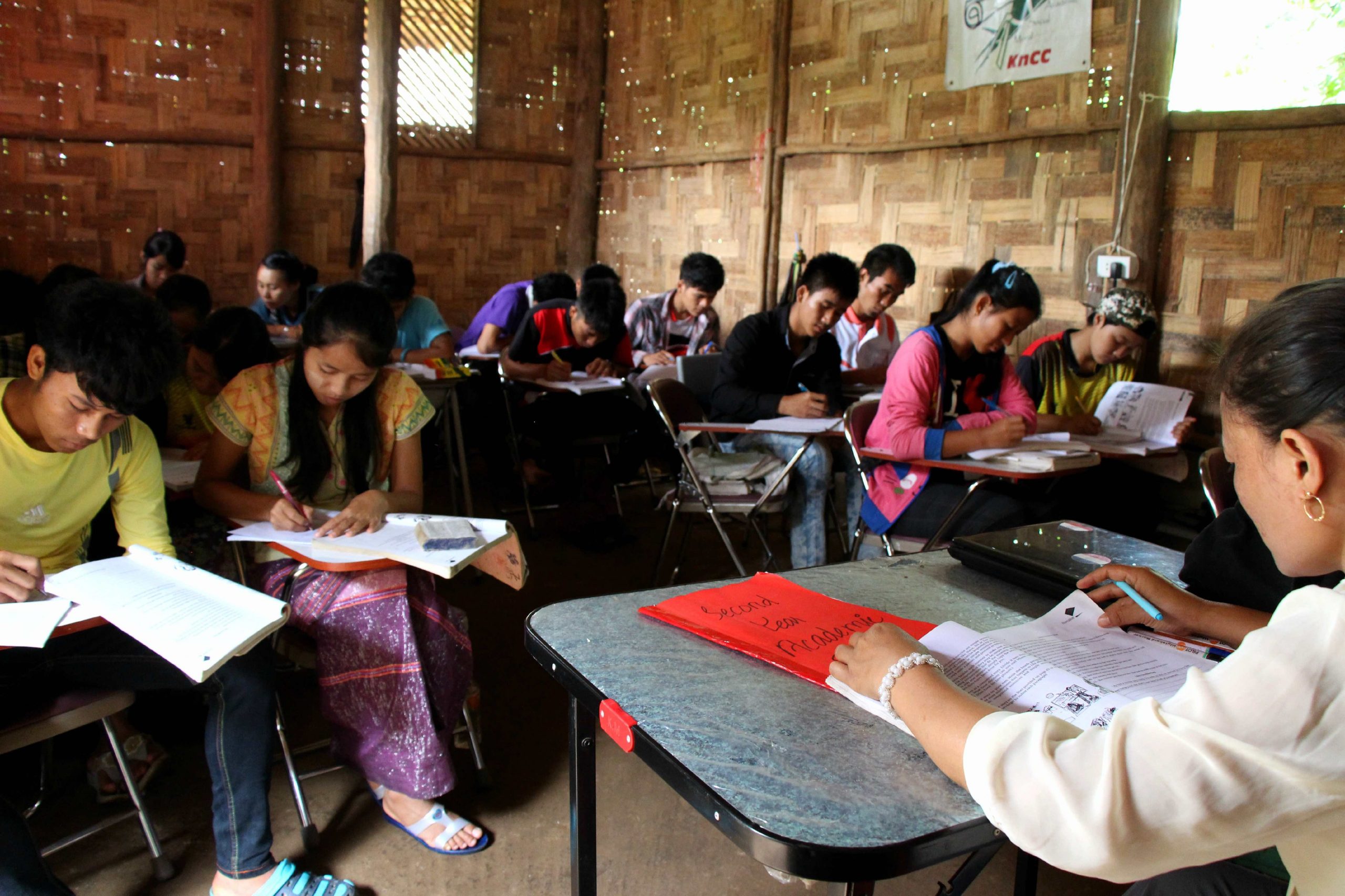Language-education experts in Burma are calling for the introduction of a multilingual teaching policy that would allow ethnic minority children to study in both their mother tongues and Burmese, rather than taking separate native-language classes.
The subject was discussed at a meeting of government officials, lawmakers and representatives of language associations from Kachin, Karen and Mon states in Naypyidaw on Tuesday, held to help formulate a national language policy.
Dr Min Nwe Soe, chairman of the Mon Language Curriculum Working Committee, said that integrating ethnic languages into the curriculum of state schools would make it easier to improve educational standards in the country.
“We can achieve a full-standard education if we can establish a learning system in our native language,” he said, adding that such a move would also create a “pleasant learning environment”.
Mon State has already formulated its own language policy, which was drafted by community leaders, government officials and lawmakers in March and subsequently presented to the state’s Planning Ministry.
The Mon language is taught or used as the language of instruction at more than 300 independent schools in Mon and Karen states and in Tenasserim Division. A total of more than 40,000 children attend these schools.
Other ethnic languages, such as Sagaw Karen, Poe Karen and Pa-O, are also being taught at some schools in Mon State, often in after-school classes.
[related]
Currently, however, there is no national language policy that encourages the use of both ethnic languages and Burmese for teaching the national curriculum. At present, Burmese is the only language of instruction used in government schools.
Other education reformers, such as well-known student activist Phyo Phyo Aung, have also been championing calls for a mother-tongue teaching programme across all schools in Burma.
“We don’t say to teach only in the mother tongue, but we should teach children in lower primary 60 percent with their mother tongue and 40 percent with Burmese,” she said in a phone interview with DVB.
She advocates that lessons should be taught predominantly in the native language of the child before increasing the ratio to favour Burmese in upper primary years. This will encourage greater participation, she says, as “students can easily understand the curriculum and then he or she can develop quickly.”
Minister of Education Dr Myo Thein Gyi told parliament last month that state and divisional governments are responsible for implementing their own language-teaching plans. However, he said that the ministry would provide free ethnic minority language textbooks.
A major education sector review, known as the Comprehensive Education Sector Review, began in 2012 and is currently in its final phase.
Led by the Ministry of Education and supported by the Asian Development Bank and other development partners including UNICEF, the review is informing the development of an updated syllabus and new textbooks by subject and grade. The framework should be released by the end of this year.



